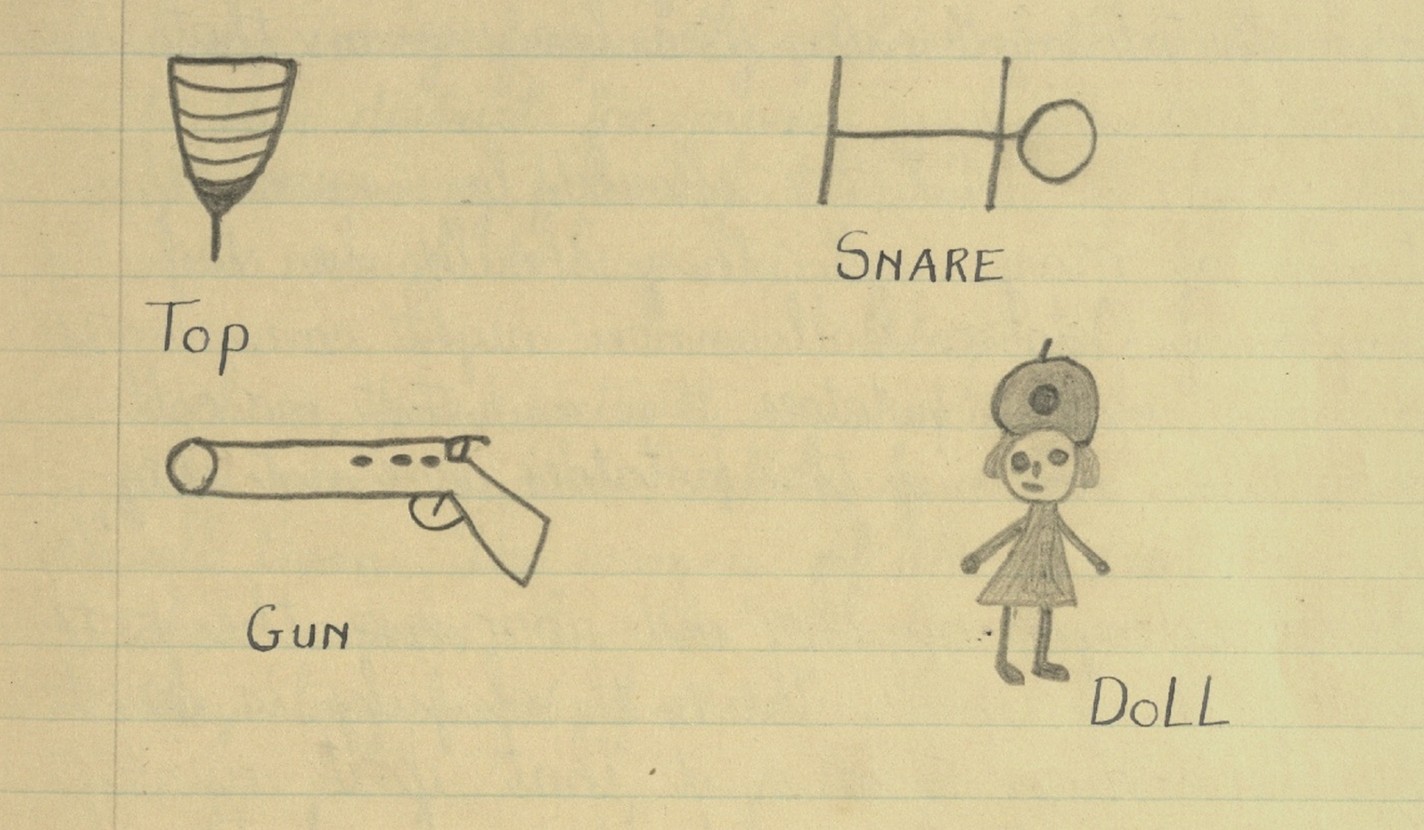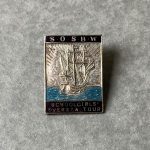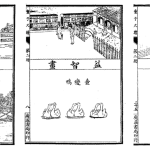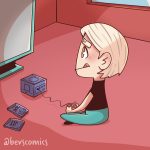Throughout twentieth-century Ireland, social, political, and commercial concerns shaped public discourses about children’s play. Parents were scrutinised for their ability to provide children with the right kinds of games and recreational activities. However, buying games, toys and sports equipment was, of course, only a possibility for those who were in a financial position to do so – the parents of the middle and upper echelons of society. Instead, most children of the poorer classes participated in informal games and played with homemade toys, which they sometimes crafted themselves. The Schools’ Folklore Collection, a collection of folklore compiled by schoolchildren in Ireland in the 1930s, has highlighted the ingenuity of children as they described creating homemade toys with common household items or materials found in nature.
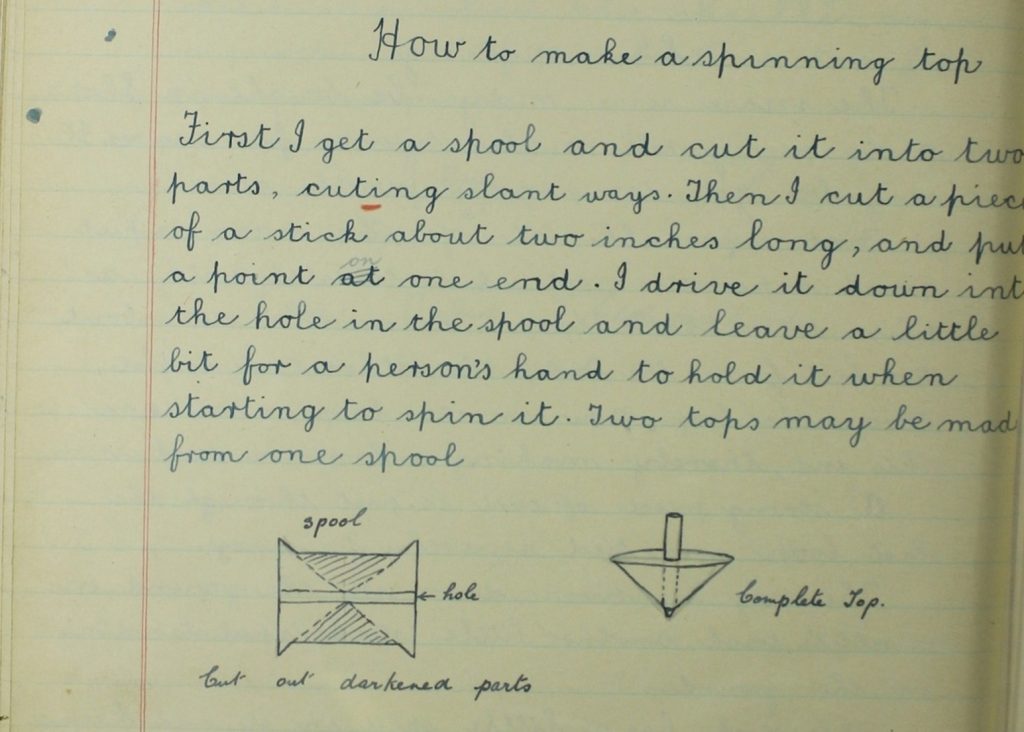
‘Spinning Tops’ and ‘Spinning Jennys’, also called ‘Whipping Tops’, were hugely popular among Irish children. The making of spinning tops is mentioned by a number of children in folklore accounts, usually involving timber and a stick. Others explain how a top can be made from a spool of thread. For example, one pupil noted that: ‘The spinning top is one top which can be made at home. It is made out of a thread spool. One end of the spool is made into a sharp point, and a nail is driven in the point of it, in order to make it spin’ (The Schools’ Collection, vol. 936, p. 280). Others describe making tops from an old tin, or even a button.
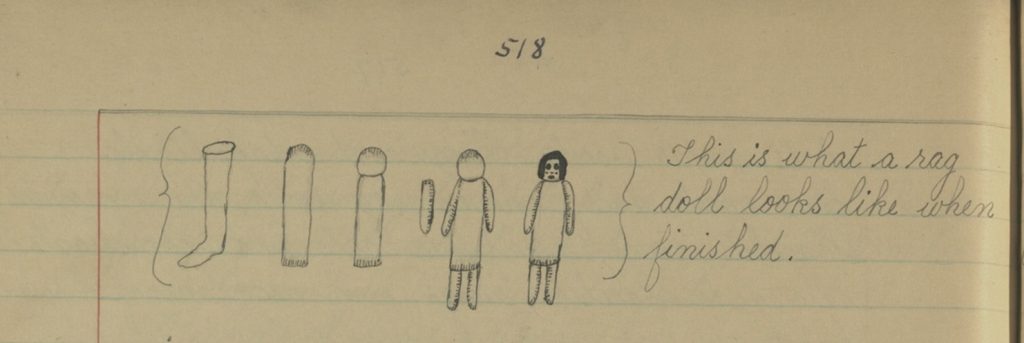
Parents were encouraged to buy dolls for their daughters, due to their perceived educational value. For the majority of lower-class girls at this time, dolls were homemade. The various ways in which these dolls were made are described by the children in the Schools’ Collection. Most were made from spare fabric, or a sock, and were stuffed with straw, sawdust, old rags or wool. Buttons could be sewn on for the eyes and mouth. Annie stated that: ‘To make a rag doll, roll tightly together a piece of cloth to make the body of the doll, and sew two pieces of sticks to each side to make the arms. To make the head roll a small piece of white cloth together and stitch it to the body. I made the eyes, nose and mouth with black thread’ (The Schools’ Collection, vol. 895, p. 44). Other children described making dolls from paper, clothes pegs, empty bags of flour, potatoes and turnips!

The process of making of other homemade toys and playthings was also discussed by children in the Schools’ Folklore Collection, including catapults, slingshots, whistles, toy guns, toy boats, kites, snares, yo-yos, play jewellery, dolls furniture and much more. These myriad descriptions of homemade toys and crafting methods, alongside intricate sketches and diagrams, by Irish schoolchildren in the 1930s highlights the significance of informal play among a cohort who could ill-afford the elaborate playthings of the upper classes.
Dr Megan McAuley (she/her) recently received her PhD from the Department of History at Maynooth University. She is interested in the history of childhood, family histories, rurality and poverty. Megan is a teaching assistant at Maynooth University and also works as a probate genealogist. Her email address is megan.mcauley@mu.ie and she is also found at @meganmcauley.bsky.social on BlueSky.
Dr Megan McAuley further discusses childhood and play in an Irish context in Mary Zaborksis (ed.) The Routledge Companion to Gender and Childhood, forthcoming. Find out more here.

